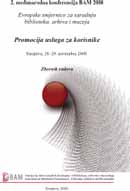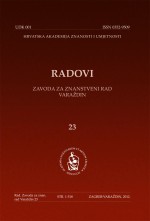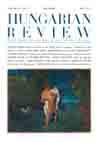Author(s): Ivana Peškan,Vesna Pascuttini-Juraga / Language(s): Croatian
Issue: 23/2012
In this paper, the authors investigated the medieval phase of the construction of the parish church of St. Nicholas in Varazdin.The Church of St. Nicholas is a well oriented, harmonious late - Baroque building, with a Gothic bell tower, located in the center of Varazdin. The church was first mentioned in the list of parish churches in the Diocese of Zagreb in 1334, as ecclesia sancti Vencezlai, the church dedicated to St. Vjenceslav. However, it can be assumed that the parish existed earlier in Varaždin, because Varaždin was the center of archdeaconry founded in the 13th century. The dedication to St. Nicholas has been used used for the parish church since 1454. Descriptions of the church from the 17th and 18th century describe a significant building and it’s rich interior. In the spirit of the medieval city organization, the church was both the sacred and secular center of the city. There is a large crypt beneath the church. The walls of the crypt are built from brick mixed with stone elements - spolia from at least two earlier phases of the construction - Romanesque and Gothic phase. The spolia differ in the type of stone and the style of carving and they allow a new art-historical view on the past of the parish church. A smaller number of spolia are made of grey sandstone. They are mostly large blocks, partially damaged, and only one of them has visible markings: there is an engraved cross on it. The other type of spolia are all made of yellow limestone, and some of them are recognised as parts of ribs. The carving style and details allow us to date them to the Gothic period. One of the elements, embedded in the western wall was particulary interesting, and the authors of this article recognised it as a keystone. It was taken out from the wall and examined more closely, and it was found that the keystone has a carved the coat of arms on it, with a bird, a star and the letter N. The keystone originates from the same period as the ribs, the second half of the 15th century. On the eastern side of the Gothic bell tower a replica of the sculpture of a bear is built in, while the original was removed, restored and stored in the collection of stone monuments of the City Museum of Varaždin. The sculpture is dated to the late 12th, or more probably, early 13th century. The comparable stone sculpture is the animal head from Zelina (Croatia); the lions from the ruined church in Vértesszentkereszt (Hungary), which are dated between the 1200 and 1237; the lion head from Bajna (Hungary) dated to the 12th century; the male head of Zalavára (Hungary), dated to the first half of the 13th century.
More...




